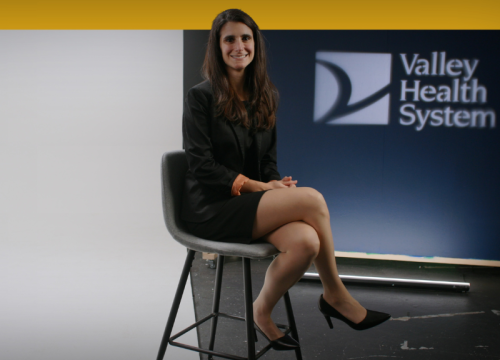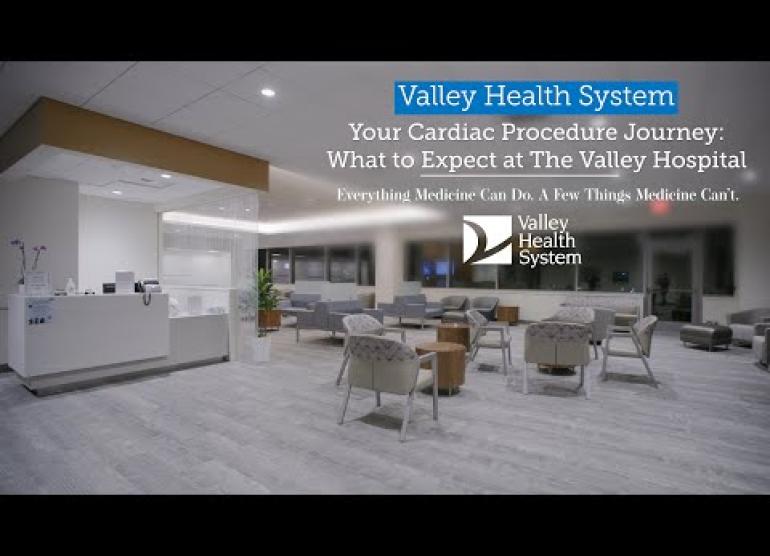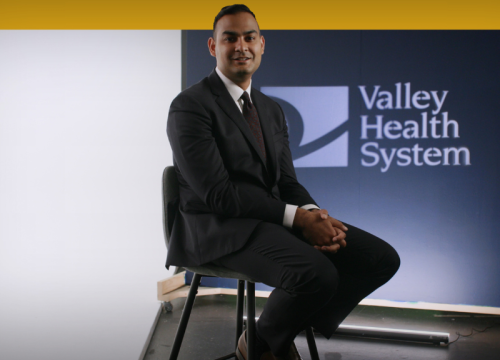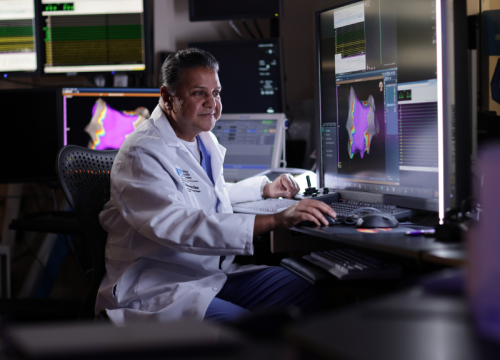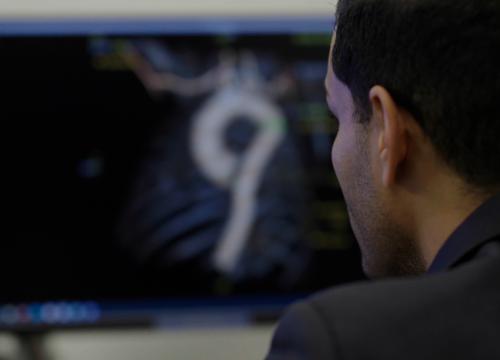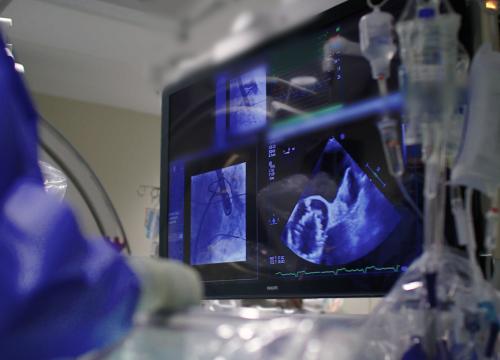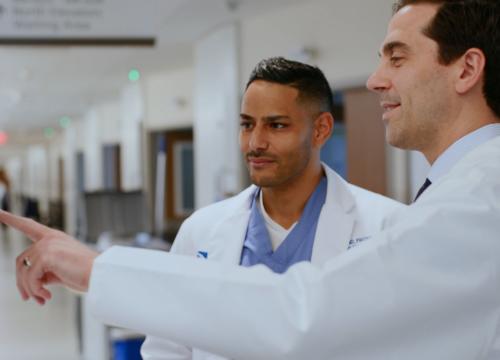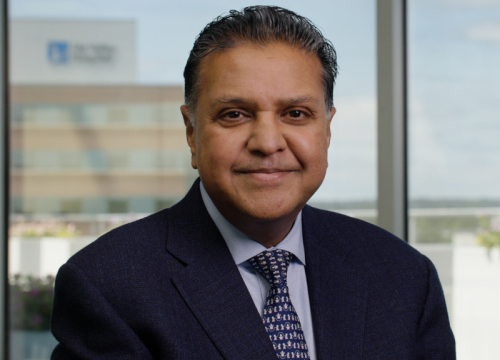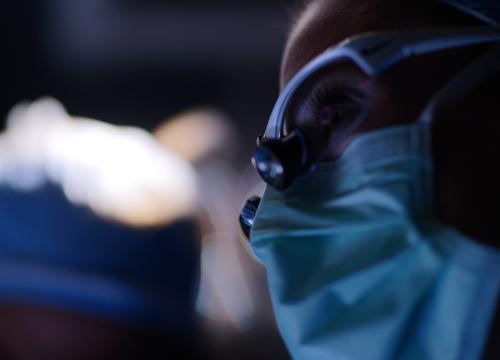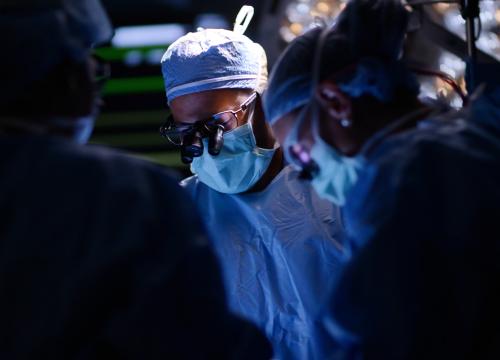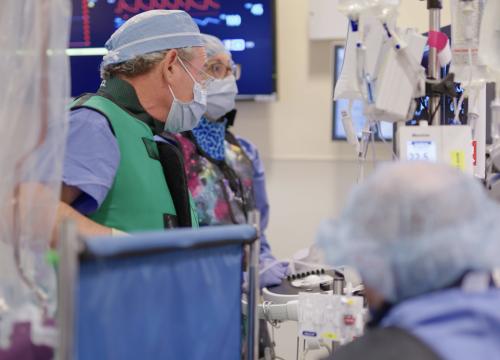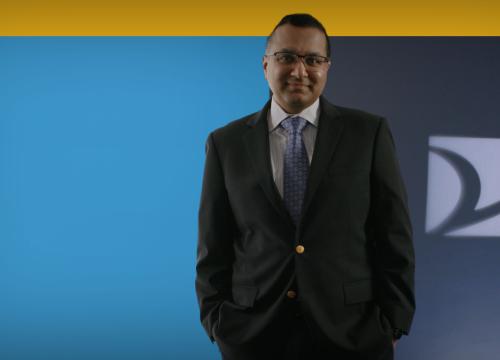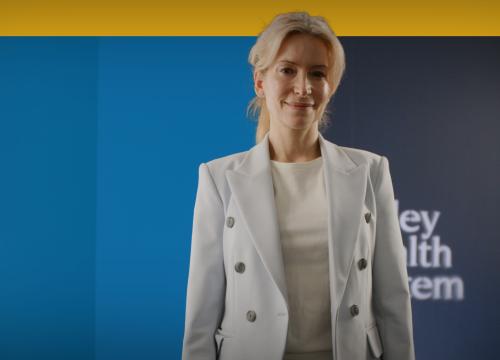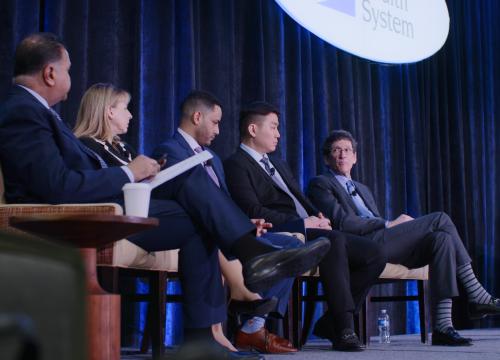A valve-sparing aortic root replacement surgery (also called the David procedure) repairs aortic aneurysms at the aortic root. Sparing the aortic valve during aortic root replacement improves long-term survival rates and decreases the risk of complications.
Valley heart surgeons specialize in this highly technical procedure. They are skilled in replacing the aortic root without replacing the aortic valve. However, they may perform aortic valve surgery at the same time if needed.
What is an Aortic Root Aneurysm?
An aortic aneurysm is a bulge in the wall of the aorta, the main artery that carries blood to your body.
Aneurysms can develop anywhere along the aorta, in the chest (thoracic aneurysm) or abdomen. An aortic root aneurysm occurs where the aorta connects with the heart.
An aortic root aneurysm may affect how the aortic valve works. The aortic valve has leaflets or flaps that keep blood moving in the right direction from the heart to the body. An aortic root aneurysm can cause blood to flow backward, which is called aortic regurgitation.
Aortic aneurysms can rupture or cause a tear in the aorta, which is called an aortic dissection. This can be life-threatening, which is why it is important to get treatment promptly.
Am I a Candidate for Valve-Sparing Aortic Root Replacement?
Valve-sparing aortic root replacement surgery is an option for many people with aortic root aneurysms.
You might be a candidate for this surgery if you have a healthy aortic valve, or one that can be repaired. The surgery is not for people with aortic valve damage or calcium buildup on the valve.
Heart surgeons at Valley may recommend valve-sparing aortic root replacement if you have these conditions that affect that the aortic root:
- Bicuspid aortic valve disease (BAV)
- Congenital heart disease
- Connective tissue problems related to Ehlers-Danlos syndrome, Marfan syndrome or Loeys-Dietz syndrome
What to Expect with the David Procedure
Heart surgeons at Valley specialize in performing the David procedure to treat aortic root aneurysms.
During this open-heart surgery, your surgeon accesses the aortic root aneurysm through a 6- to 10-inch incision to open the breastbone. During the procedure, a heart-lung bypass machine will take over the heart function and circulation.
Your heart surgeon will then perform the following:
- Repair the aortic valve
- Remove the affected part of the aorta and aortic root
- Replace the aortic root with a synthetic (artificial) tube called a graft
- Connect the aortic valve to the graft
- Connect the graft to the heart
- Connect the graft to the rest of the aorta
Recovery After the David Procedure
Immediately after valve-sparing aortic root replacement, you will recover in the cardiac intensive care unit. After 24 to 48 hours, you will move to a private hospital room for two to three days.
You will work closely with your provider to discuss your overall recovery. Typically, after the David procedure, most people can return home after their hospital stay. You can likely get back to regular daily activities within about four weeks.
Rehabilitation After the David Procedure
As with any open-heart surgery, rehabilitation can be an important part of your recovery after the David procedure at Valley.
While you’re recovering in the hospital, you’ll begin cardiac rehabilitation. This may include medically supervised exercises, nutrition guidance and stress management. You can also choose to continue the program after you leave the hospital.
Why Choose Valley for Valve-Sparing Aortic Root Replacement?
- Advanced, integrated aortic care: Valley offers integrated, multispecialty aortic aneurysm care. We offer advanced cardiac imaging and diagnostic procedures that uncover the root of your condition. We also specialize in the full range of treatment options. This includes everything from active surveillance and medical management to minimally invasive endovascular aneurysm repair and open-heart surgery.
- The most experience in our area: Valley has performed among the most David procedures in the area outside of New York City. This means you can feel confident that your team has the skills and expertise to successfully perform this complex procedure.
- Long-term results: Studies at Valley show that repaired aortic valves during the David procedure do not need replacement even 20 years after surgery. This means you’ll likely see a long-term benefit from this procedure.
- Leaving no question unanswered: At Valley, our goal is to help you understand all aspects of the David procedure. Our experienced cardiovascular nurse practitioners are with you every step of the way, answering questions and guiding your care. And our nurse navigators simplify scheduling by coordinating your appointments, allowing you to focus on your health.
- Care after surgery: Our team will make sure you understand your recovery plan after your surgery. For instance, we’ll discuss if cardiac rehabilitation could benefit you. We can also help coordinate home care arrangements if you need additional help at home.



